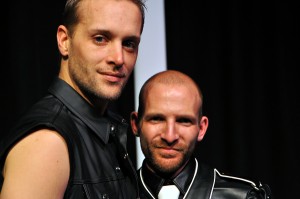Arts & Entertainment
Fetishes and festivities
This weekend’s Mid-Atlantic Leather convention has new location
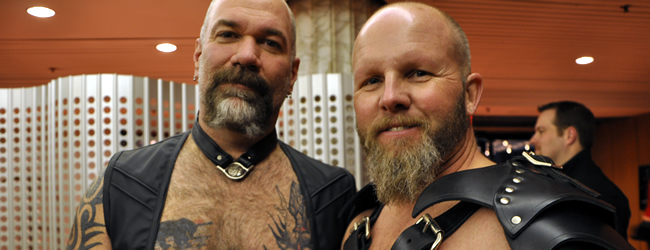
Mid-Atlantic Leather Weekend 2011
Hyatt Regency Hotel Capitol Hill
400 New Jersey Ave. NW
Friday
* Registration — Ballroom level foyer — 4-10:30 p.m.
* Leather Exhibit Hall — exhibit area, Ballroom Level 5-11 p.m.
* Opening Reception (cash bar) — Yorktown Ballroom — 9-11 p.m.
* MAL Bar Crawl Bus — 10 p.m.-2 a.m.
Saturday Jan. 15
* Registration continues — 10 a.m.-5 p.m.
* Leather Exhibit Hall continues — noon-8 p.m.
* Leather Cocktails — Regency Ballroom — 6:30-9 p.m.
* CODE Party — The Crucible — 9 p.m.-2 a.m.
* MAL partner event — discounted admission
for MAL 2001 Full Weekend package holders
* MAL Bar Crawl Bus -—10 p.m.-2 a.m.
Sunday
* MAL Brunch — main lobby — 10 a.m.-noon
* Leather exhibit hall continues
* Mr. Mid-Atlantic Leather Contest — Regency Ballroom — 1 p.m.-5 p.m. (separate tickets are available for this event)
* Reaction — 9:30 Club — 10 p.m.-5 a.m. (separate tickets are available for this event)
The Bootblack Brigade hosts a bar night Saturday starting 10 p.m. at Green Lantern, 13335 Green Court, N.W. — no admission fee
And at D.C. Eagle, 639 New York Ave. N.W., the MAL Weekend welcome begins 7 p.m. Friday and continues through Monday starting at 8 p.m.
More details are here.
It’s back for another year — Mid-Atlantic Leather Weekend.
Once again, Washington becomes this weekend a fantasy scene of leather chaps and cigars, slave collars and chains — with hankie-flagging people seeking the endorphin rush of erotic heat as they cruise hotel lobbies and prowl upstairs corridors for private play parties or hunt exotic thrills at live demos of kink at the Code party. But it’s also the chance to meet old friends and make new ones within the special brotherhood (and sisterhood) of the men and women who embrace leather.
And this year’s gathering happening this weekend, this time at a new hotel, promises once again, according to the sponsoring organization, the Centaur Motorcycle Club of D.C., on its website, to be “one of the hottest leather/fetish events in North America and the world’s largest leather club run.”
“Thousands of leathermen, gearheads, kinksters, rubber freaks and even curious novices from all over the world,” says the promo material, will “come to the nation’s capitol for a weekend of hot, horny fun.”
“We’re literally looking for thousands of people to come for the weekend,” says a confident Larry Barat, the Centaur M.C. promotions chair for the weekend. About 600 or 700 people are expected to register for the full, three-day package, he says, “but we anticipate 2,000 or 3,000 or possibly more to participate in side events organized around the weekend and at the bars,” especially, he said, at the D.C. Eagle and Green Lantern.
The three-day package is $180 in advance or $200 at the door, a package including access to all events and exhibits, said Barat, who also pointed out that “an important new change for MAL 2011” is that entry into the weekend area at the hotel, including for the Leather Exhibit Hall but not the special events, will now require a “Weekend Admission Pass.” The cost for such a three-day pass is $25 if purchased on Friday, $20 on Saturday, or $10 on Sunday or alternatively $10 for any one of those days only.
The D.C.-based Centaur club, now in its 41st year, according to Barat currently consists of about 30 active members. It has sponsored MAL, now in its 31st year, from the beginning. After more than a decade of being housed at the Washington Plaza Hotel at Thomas Circle, it moves this year to the Hyatt Regency on Capitol Hill, because “we simply outgrew that hotel,” Barat says. The Washington Plaza has only 360 rooms, while the Hyatt has about 800.
“Obviously with a new home for MAL, we’re excited about that, but also a little nervous,” he adds, but he has been meeting with Hyatt staff, along with other Centaur event planners, and believes everybody feels that the weekend will be a success.
Another MAL Weekend coordinator, its chairman and fellow Centaur member Patrick Grady met Monday for another meeting “with about 30 hotel managers in the room,” and Grady says “everybody at the Hyatt is very enthusiastic indeed.”
This year, they have booked only about three-quarters of the Hyatt’s rooms because, says Barat, “we were trying to be a bit conservative this year and not over-extend ourselves.” Even so, weekend registration has spilled over into rooms reserved at the Liaison Hotel across the street.
All MAL attendees will be on the same floors. Organizers hope next year to fill the entire hotel.
Grady says his first MAL Weekend began when he joined the Washington Plaza Hotel as its director of catering in 1997 and a month later hundreds of MAL Weekend participants thronged the hotel, the second year at that venue, and he got his first real look close-up at the leather community.
“I was a newbie in ’97,” he says, “and I didn’t know their community even existed.”
He was taken in by the friendly vibes and soon, he says, he began to frequent the Eagle and then to hang out with the Centaurs. By 1999 he had sunk his own roots deep into the leather world.
Grady says that after that first weekend, “I couldn’t wait to see everybody back in ’98,” and he was drawn to the sense of community that he found, especially in the Centaur MC. Yes, he knows that some LGBT people are uncomfortable with the more taboo aspects of the leather world — the BDSM sexuality — but he says the reality is that the leather world — and the Centaur club — is “very diverse.”
“We have members who have motorcycles and those who don’t, who are large and skinny, tall and short, and the only real common denominator is that we like one another,” he says. “Some are hard-core leather folk and others are just out for a good time.” But he admits that “when we gather together sometimes we are a little much for some people — we tend to be very gregarious.”
His objective this year is simple: “to make new friends and renew old acquaintances,” a goal echoed by Barat, who says “our aim is to have fun and make sure everybody who comes has fun, so they can meet new people and explore new things.”
The signature events, says Barat, are the Leather Cocktails reception Saturday evening, the buses for the MAL bar-crawl, the CODE party at the Crucible S&M club Saturday night into the wee hours of Sunday morning, the Mr. Mid-Atlantic Leather Contest Sunday afternoon, and the finale event, the Reaction dance at the 9:30 Club from 10 p.m. Sunday until 5 a.m. Monday. Throughout the entire weekend also, another big draw is the Leather Exhibit Hall located on the hotel’s Ballroom level, with dozens of vendors of gear, books and other paraphernalia.
The MAL Weekend in 1998 was “the first big leather event” he ever attended, though he had lived a leather lifestyle “on and off” since he was 19. Now 50 and a U Street resident for the past seven years, by day Barat works on international public health issues for the U.S. Government.
For him, owning a bike is important to the leather lifestyle, and though he recently sold his own Harley Davidson “Fat Boy,” now he says he can’t wait until the weather gets warm again to get his next new bike. Though he says another D.C.-based club, the Spartans, “are more into motorcycles,” the Cenatur M.C. still sponsors runs two or three times a year, usually to Skyline Drive and into West Virginia and back.
Like Grady, Barat was won over by the welcoming vibes of community he felt at his first MAL Weekend: “I was really kind of shocked at how friendly everyone was,” and how eager people were to teach him about the things he didn’t know, and he also began to understand the wide variety of lifestyles subsumed under the leather label.
The gay male leather subculture has existed, according to most accounts, since the late 1940s, when it grew out of gay men who had typically worn uniforms during World War II and mustered out and were looking for a way to sustain the homosocial world and its rituals and rules of masculine identity they had experienced during wartime. Soon these men found their way into the culture of biker clubs, and for them the lure of leather signified a code of dress rooted for most — though not all — in sexual activities, often defined by the sexual practices loosely grouped under the label of BDSM.
“Leather is a term that includes dressing up and getting into sexual scenes when dressed up, acting out certain sexual fantasies like getting flogged, at one end of the spectrum, but you don’t need to dress for BD events,” Barat says.
At the other end of the spectrum, he says, people just like the feel of leather and the thrill of the road and the ride.
“And it’s everything in between,” he says,”plus, it’s not just leather alone anymore – there’s rubber, there’s sports-gear, there’s uniforms. And now there’s also a lot of young guys into dressing up as super heroes and comic book heroes.”
“It’s a whole range of of people and the nice thing about the community is that it’s very accepting,” Barat says. “You see a guy in full leather gear talking to a guy dressed up like Batman talking to a guy dressed up in full rubber.”
For many, participation is a chance to distinguish themselves from mainstream sexual activities. For some it can mean immersion in sexual kink. For others, just wearing the trappings of black leather is the main point, an erotic fashion statement expressing heightened masculinity.
The pioneering gay motorcycle clubs — the Satyrs of Los Angeles, established in 1954, and others like the Warlocks of San Francisco — reflected that same sense of disaffection with the postwar mainstream. It also provided an archetype for gay men who resisted effeminate stereotypes. For years, Larry Townsend’s “Leatherman’s Handbook” was the guide by which rank in the leather community — slave, boy, sir and master — was determined.
But by the 1980s, and perhaps even earlier, a rebellion arose against old guard role rigidity, and instead there was a new emphasis upon choices and personal self-identity, in which a person might consent to begin and end as either slave or master or switch back and forth. In this new world of greater flexibility, leather practitioners defined themselves as “new guard,” and an increasing number of pan-sexual clubs evolved as well.
“There’s a generational aspect to it,” Barat says. “The old guard has to do with fixed attitudes concerning dominance and submissiveness, and in the old guard ‘D’ and ‘s’ is not just something that one does in sexual play, but something one lives 24/7.”
He says it’s now more flexible and all a matter of self-identification, not following rules.
Barat says he is a good example of this transition.
“I began as old guard and in the past I identified as a boy and more recently as a sir, but now as I get older I’ve stopped labeling myself, and now I see myself as a new guard kind of guy.”
As for the Centaurs, he says that some are into BDSM and others are not, but it’s not a primary focus of the club.
“Some of us wear leather and are into gear and not so kinky, and there others who are kinky and don’t necessarily wear a lot of leather.
Meanwhile, pop culture itself has absorbed the look of leather and the feel of erotic alternatives. Witness the numerous popular images of Elvis from the 1960s fully clothed in black leather and then 1970s heavy-metal bands such as Kiss, Black Sabbath and Judas Priest who were cloaked in leather. The latter’s lead singer Rob Halford, himself openly gay, wore a leather costume on stage as early as 1978. Soon codpieces and even harnesses proliferated on metal-rock costumes, as such gear became appropriated by internationally successful bands like the L.A. metal band Motley Crue.
Now numerous lesbians also identify as leatherwomen and a leather pride sticker adorns the guitar of singer Joan Jett. San Francisco leather and lesbian activist Pat Califa co-founded one of the first lesbian S&M groups, Samois, and became a prolific contributor to lesbian BDSM literary erotica and sex handbooks. Leather and Lace, an “old guard” woman’s BDSM social group, was founded in Los Angeles in 1980, and in New York City there was LSM – the Lesbian Sex Mafia.
Another demographic shift in leather, says Barat, has come as younger leathermen and leatherwomen enter the worlds of leather kink, fetish and gear. It used to be mostly men over 40 graduating into the leather lifestyle, he says, “but now guys get into this lifestyle at a very young age and we’re seeing guys at our events in their early twenties.”
Barat admits, however, that leather “was once so taboo and is still not fully accepted within the larger gay community.” He hopes these attitudes are changing, but that “large parts of the gay community are still very intolerant of leather folk.” He says “there are very conservative gay people, who think we should all be monogamous, live in the suburbs, have children and go to church.”
Several entertainment guests will perform. Comedy duo Dick and Duane (Richie Cohen and Duane Tragis) are slated along with the traditional Mr. MAL 2011 contest Sunday afternoon and the Reaction party at which DJ Susan Morabito will spin.
Theater
Out actor talks lead role in ‘Fiddler on the Roof’
Signature Theatre production runs through Jan. 25
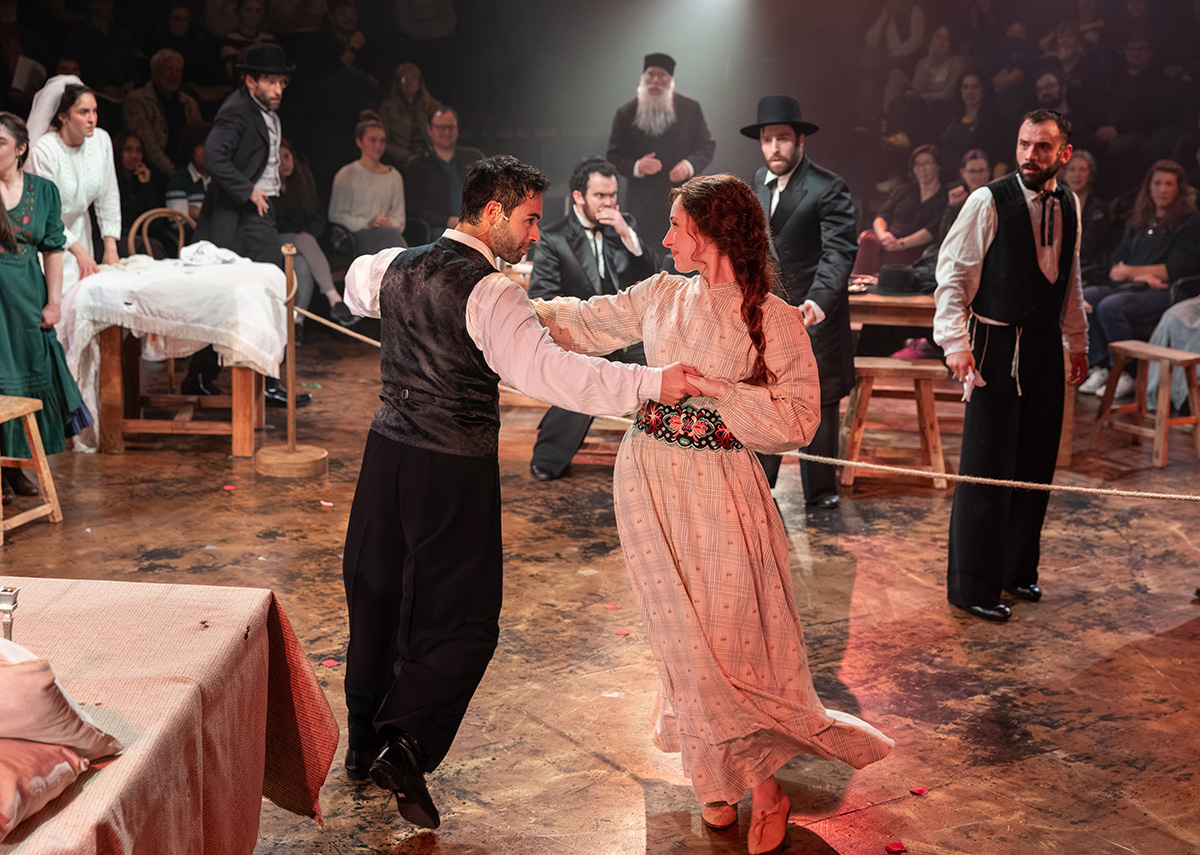
‘Fiddler on the Roof’
Through Jan. 25
Signature Theatre
4200 Campbell Ave.
Arlington, Va.
Tickets start at $47
Sigtheatre.org
Out actor Ariel Neydavoud is deep into a three-month run playing revolutionary student Perchick in the beloved 1964 musical “Fiddler on the Roof” at Signature Theatre in Arlington. And like his previous gigs, it’s been a learning experience.
This time, he’s gleaning knowledge from celebrated gay actor Douglas Sills who’s starring as the show’s central character Tevya, a poor Jewish milkman in the fictional village of Anatevka in tsarist Russia circa 1905.
In addition to anti-Semitism and expulsion, Tevya is struggling with waning traditions in a changing world where his daughters dare suggest marrying for love. Daughter Hodel (Lily Burka) falls for Perchick, an outsider who comes to town brandishing new ideas.
In addition to its compelling and humor filled storyline, “Fiddler” boasts iconic numbers like “If I Were a Rich Man,” “Tradition,” “Matchmaker, Matchmaker,” and “Sunrise, Sunset.”
Neydavoud, born and raised as an only child in the West Los Angeles neighborhood lightheartedly referred to as Tehrangeles (due to the large Iranian-American population), has always been passionate about performing. “It’s like I came out of the womb tap dancing,” he says. Fortunately, his mother, an accomplished pianist and composer, served as built-in accompanist.
He began acting and singing at kid camps and a private Jewish middle school alongside classmate Ben Platt. In his teens, Neydavoud spent three glorious weeks at Stagedoor Manor, a well-known theater camp in Upstate New York, where he solidified his desire to pursue theater as a profession, and started to feel comfortable with being queer.
Following high school, he studied at AMDA (American Musical and Dramatic Academy) and soon after morphed from theater student to professional actor.
WASHINGTON BLADE: Your entry into showbiz seems to have been a smooth one.
ARIEL NEYDAVOUD: I’m happy to hear it seems that way. I’d rarely describe anything about this profession as smooth; nonetheless, what I love about this work is that it gives opportunities to have so many new experiences: new shows, new parts, and new communities who come together in a moment’s notice purely for the sake of creating art.
BLADE: Tell us about Perchick.
NEYDAVOUD: He comes to Anatevka and challenges their ideals and way of life. That’s something I can relate to.
I’m Jewish on both sides, but I’m also queer, first generation American, [his mother and father are from Germany and Iran, respectively], and a person of color. I never feel like I belong to a single community. That’s what has emboldened my inner activist to speak up and challenge ideas that I don’t necessarily buy into.
BLADE: You sing beautifully. Perchick’s song is “Now I have Everything,” an Act II melody about finding love. Was it an instant fit for you?
NEYDAVOUD: Not instantly.I’m traditionally a first tenor. Perchick is baritone range, a little outside of my comfort zone. After being cast, I asked our director Joe Calarco if he would be comfortable raising the key, something they did with the recent Broadway revival. He was firm about not doing that.
As an artist I see challenges as opportunities to grow, so it’s been really good exploring my lower register.
BLADE: Audiences have commented on an intimacy surrounding this production.
TK: It’s performed in the round with a dining table at its center. It could be a sabbath or seder table, however you interpret it, but I find it a brilliant way to illustrate community and tradition.
It feels like the audience is invited to the table and join the residents of Anatevka. The show’s moments of joy like the betrothal song “To Life (L’Chaim)” are intensified, and conversely the pogrom scenes are made more difficult. It feels like we’re sharing space.
BLADE: Do your encompassing identities broaden casting possibilities for you?
NEYDAVOUD: Marketing yourself as ethnically ambiguous can be a helpful tool. After “Hamilton” and the pandemic there was more of a shift toward authenticity. I try to steer toward playing Middle Eastern, Southwest Asian, Jewish, and mixed-race characters without being too prescriptive.
BLADE: Tell us your dream roles?
NEYDAVOUD: I’d love to play the Emcee in Cabaret [often portrayed as a gender-fluid, queer-coded, or non-binary figure]. And I’d like to direct a production of “Godspell” with a fully Middle Eastern cast. I think portraying Jesus and disciples in Middle Eastern bodies as Bohemian idealists living under an oppressive regime could be especially impactful.
BLADE: Can today’s queer audiences relate to life on the shtetl?
NEYDAVOUD: As a piece, “Fiddler” is timeless. Beyond the magical score, it hits home with just about anyone who’s ever felt othered. There are relevant themes of displacement and persecution, and maintaining cultural identity in the wake of turbulence, all ideas that tend to resonate with queer people.
Books
This gay author sees dead people
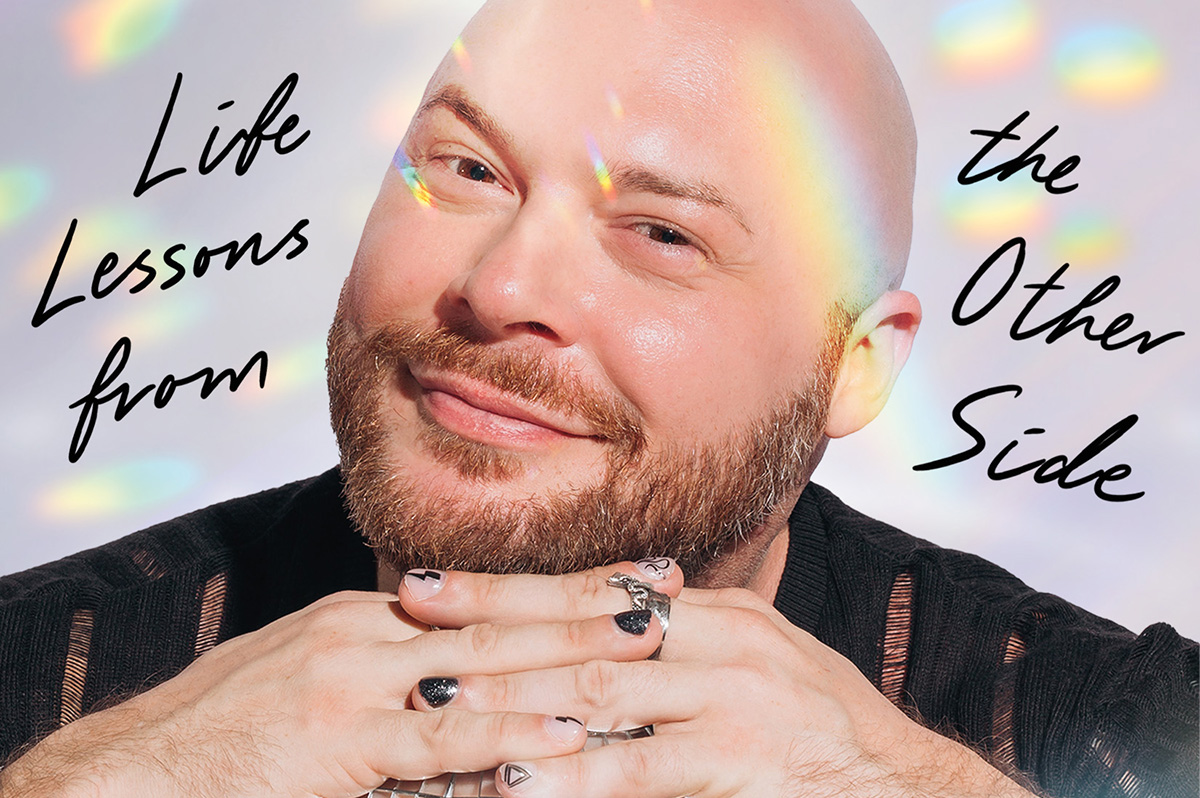
‘Are You There Spirit? It’s Me, Travis’
By Travis Holp
c.2025, Spiegel and Grau
$28/240 pages
Your dad sent you a penny the other day, minted in his birth year.
They say pennies from heaven are a sign of some sort, and that makes sense: You’ve been thinking about him a lot lately. Some might scoff, but the idea that a lost loved one is trying to tell you he’s OK is comforting. So read the new book, “Are You There, Spirit? It’s Me, Travis” by Travis Holp, and keep your eyes open.

Ever since he was a young boy growing up just outside Dayton, Ohio, Travis Holp wanted to be a writer. He also wanted to say that he was gay but his conservative parents believed his gayness was some sort of phase. That, and bullying made him hide who he was.
He also had to hide his nascent ability to communicate with people who had died, through an entity he calls “Spirit.” Eventually, though it left him with psychological scars and a drinking problem he’s since overcome, Holp was finally able to talk about his gayness and reveal his otherworldly ability.
Getting some people to believe that he speaks to the dead is still a tall order. Spirit helps naysayers, as well as Holp himself.
Spirit, he says, isn’t a person or an essence; Spirit is love. Spirit is a conduit of healing and energy, speaking through Holp in symbolic messages, feelings, and through synchronistic events. For example, Holp says coincidences are not coincidental; they’re ways for loved ones to convey messages of healing and energy.
To tap into your own healing Spirit, Holp says to trust yourself when you think you’ve received a healing message. Ignore your ego, but listen to your inner voice. Remember that Spirit won’t work on any fixed timeline, and its only purpose is to exist.
And keep in mind that “anything is possible because you are an unlimited being.”
You’re going to want very much to like “Are You There, Spirit? It’s Me, Travis.” The cover photo of author Travis Holp will make you smile. Alas, what you’ll find in here is hard to read, not due to content but for lack of focus.
What’s inside this book is scattered and repetitious. Love, energy, healing, faith, and fear are words that are used often – so often, in fact, that many pages feel like they’ve been recycled, or like you’ve entered a time warp that moves you backward, page-wise. Yes, there are uplifting accounts of readings that Holp has done with clients here, and they’re exciting but there are too few of them. When you find them, you’ll love them. They may make you cry. They’re exactly what you need, if you grieve. Just not enough.
This isn’t a terrible book, but its audience might be narrow. It absolutely needs more stories, less sentiment; more tales, less transcendence and if that’s your aim, go elsewhere. But if your soul cries for comfort after loss, “Are You There, Spirit? It’s Me, Travis” might still make sense.
The Blade may receive commissions from qualifying purchases made via this post.
a&e features
Your guide to D.C.’s queer New Year’s Eve parties
Ring in 2026 with drag, leather, Champagne, and more
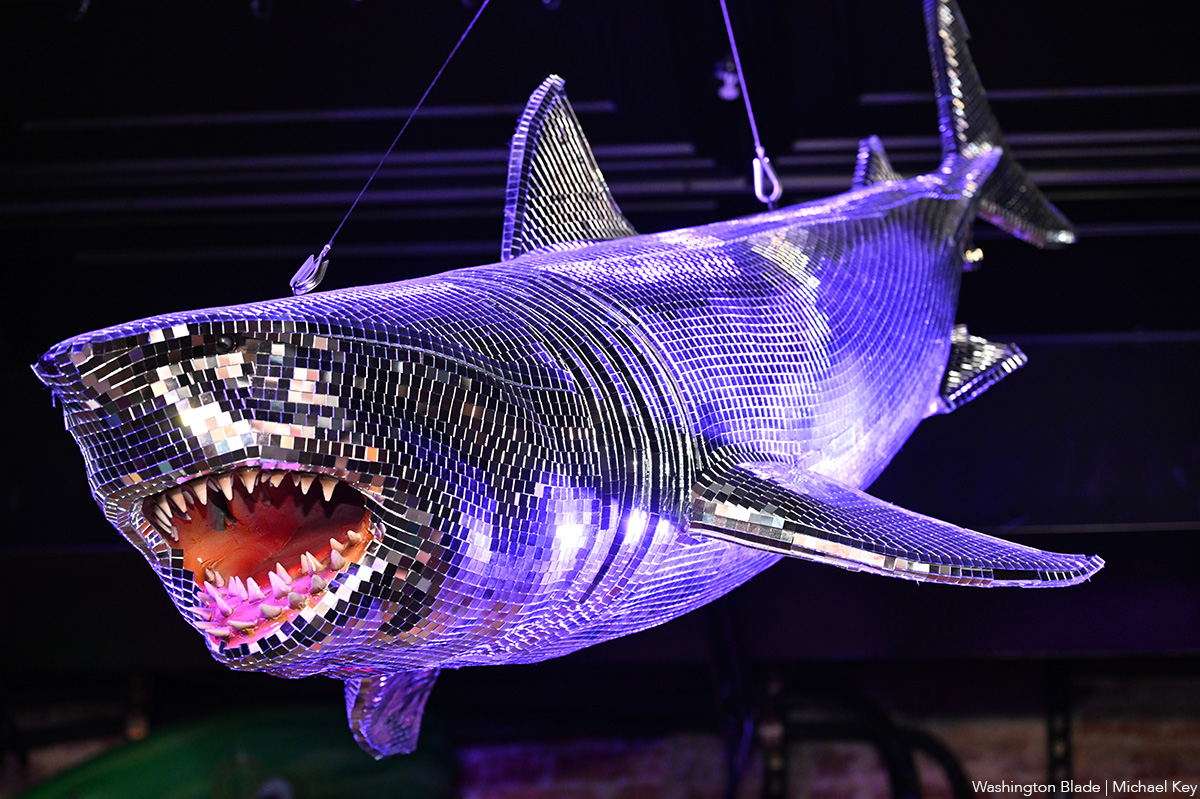
With Christmas in the rear view mirror, we can turn our attention to ringing in a much-anticipated New Year with a slew of local LGBTQ parties. Here’s what’s on tap.
Pitchers
This spacious Adams Morgan bar is hosting the “Pitchers’ Perfect New Year’s Eve.” There will be a midnight Champagne toast, the ball drop on the big screens, and no cover, all night long. The bar doesn’t close until 4 a.m., and the kitchen will be open late (though not until close). All five floors will be open for the party, and party favors are promised.
Trade
D.C.’s hottest bar/club combo is leaning into the Shark motif with its NYE party, “Feeding Frenzy.” The party is a “glitterati-infused Naughty-cal New Year’s Even in the Shark Tank, where the boats are churning and the sharks are circling.” Trade also boasts no cover charge, with doors opening at 5 p.m. and the aforementioned Shark Tank opening at 9 p.m.. Four DJs will be spread across the two spaces; midnight hostess is played by Vagenesis and the two sea sirens sensuously calling are Anathema and Justin Williams.
Number Nine
While Trade will have two DJs as part of one party, Number Nine will host two separate parties, one on each floor. The first floor is classic Number Nine, a more casual-style event with the countdown on TVs and a Champagne midnight toast. There will be no cover and doors open at 5 p.m. Upstairs will be hosted by Capital Sapphics for its second annual NYE gathering. Tickets (about $50) include a midnight Champagne toast, curated drink menu, sapphic DJ set by Rijak, and tarot readings by Yooji.
Crush
Crush will kick off NYE with a free drag bingo at 8 p.m. for the early birds. Post-bingo, there will be a cover for the rest of the evening, featuring two DJs. The cover ($20 limited pre-sale that includes line skip until 11 p.m.; $25 at the door after 9 p.m.) includes one free N/A or Crush, a Champagne toast, and party favors (“the legal kind”). More details on Eventbrite.
Bunker
This subterranean lair is hosting a NYE party entitled “Frosted & Fur: Aspen After Dark New Year’s Eve Celebration.” Arriety from Rupaul Season 15 is set to host, with International DJ Alex Lo. Doors open at 9 p.m. and close at 3 p.m.; there is a midnight Champagne toast. Cover is $25, plus an optional $99 all-you-can-drink package.
District Eagle
This leather-focused bar is hosting “Bulge” for its NYE party. Each District Eagle floor will have its own music and vibe. Doors run from 7 p.m.-3 a.m. and cover is $15. There will be a Champagne toast at midnight, as well as drink specials during the event.
Kiki, Shakiki
Kiki and its new sister bar program Shakiki (in the old Shakers space) will have the same type of party on New Year’s Eve. Both bars open their doors at 5 p.m. and stay open until closing time. Both will offer a Champagne toast at midnight. At Kiki, DJ Vodkatrina will play; at Shakiki, it’ll be DJ Alex Love. Kiki keeps the party going on New Year’s Day, opening at 2 p.m., to celebrate Kiki’s fourth anniversary. There will be a drag show at 6 p.m. and an early 2000s dance party 4-8 p.m.
Spark
This bar and its new menu of alcoholic and twin N/A drinks will host a NYE party with music by DJ Emerald Fox. Given this menu, there will be a complimentary toast at midnight, guests can choose either sparkling wine with or without alcohol. No cover, but Spark is also offering optional wristbands at the door for $35 open bar 11 p.m.-1 a.m. (mid-shelf liquor & all NA drinks).

